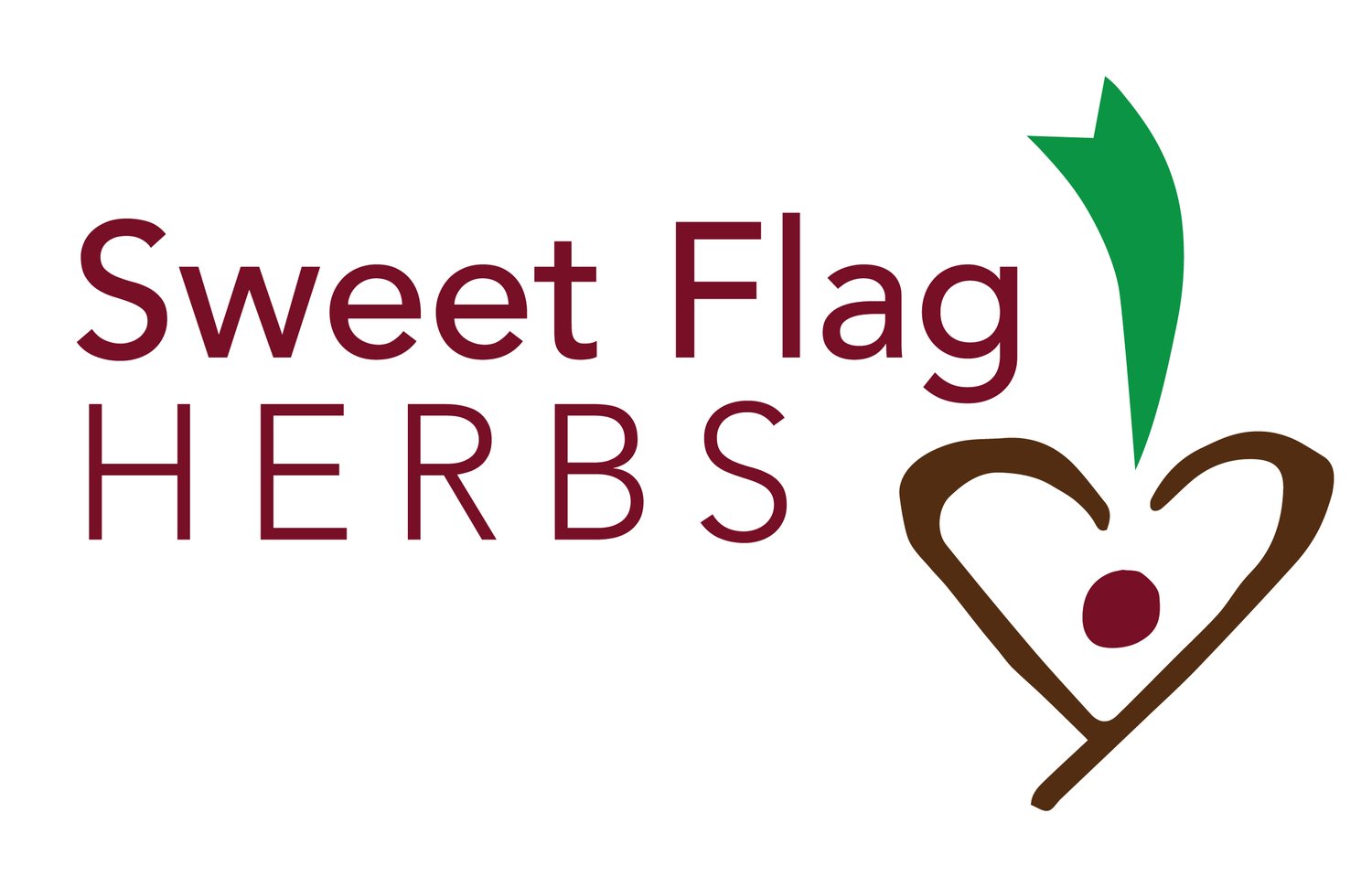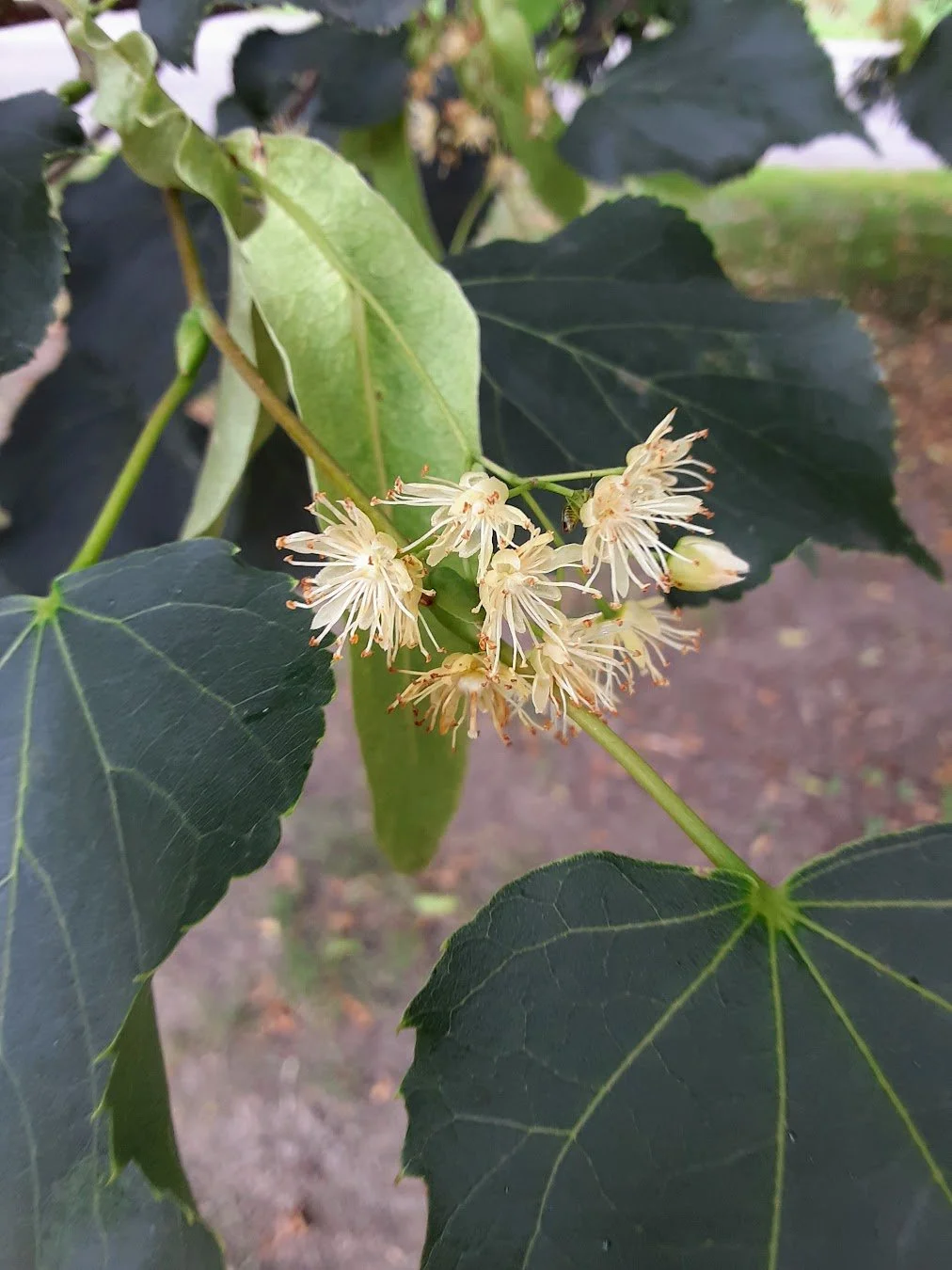Linden: The Honey Tree
In the WNY neighborhoods I feel most connected to, linden trees (Tilia spp.) abound. A few doors down from my village of Hamburg apartment, a compact linden adds sweet fragrance to my street every June. In the City of Dunkirk, where I manage the Dunkirk Farmers Market, I park my car next to a towering linden every week to erect a 'Market today!' sign on a busy corner. I've seen linden trees lining streets in the city of Buffalo, and exit ramps off of the thruway.
History & Culture
In parts of Europe, linden is known as "lime," which derives from the middle English lind for ''flexible' or 'lenient.' Linden is the national symbol of Slovenia and the Czech Republic, and the trees serve as traditional community gathering space. According to clinical herbalist Guido Mase, "Villages would hold court under their branches, confident that the tree would ensure justice, but also bring peace and an amicable resolution to conflict. In many villages, the practice continues today" (2013). The International World War Peace Tree in Darmstadt, Indiana is a linden as well. After World War I, German immigrants planted this tree as a symbol of their loyalty to America, and their hope to foster harmony in their new community (Davis, 2008).
A Few Uses
Linden flowers make a delicious herbal tea! While aromatic herbs are often astringent and a bit drying, linden’s lovely aromatics are paired with soothing mucilage. Many of linden’s mallow family (Malvaceae) cousins are mucilaginous, too: okra, marshmallow, hibiscus, and hollyhock are a few examples. This “plant slime” adds subtle body to a cup of tea, soothing the throat on the way down. Mucilage keeps respiratory tissue moist in dry winter months, helps with hydration in the summer, and helps heal tissue along the digestive tract.
Linden's heart-shaped leaves hint at its medicinal benefits for the cardiovascular system. Similar to gentle herbs like hawthorn and motherwort, linden can be helpful when an individual is experiencing anxiety and/or stress with cardiovascular symptoms, such as palpitations and high blood pressure.
Like other remedies that support the physical cardiovascular system, linden has also been used to support the emotional heart. According to Mase, linden tea "is also thought to foster love and an open heart, alleviating impatience and anger" (2013).
Though linden can be prepared as a tincture (aka alcohol extract), I prefer preparations that better showcase its deliciousness. Add a healthy handful of flowers to a quart of hot water for tea, making sure to cover your container to preserve the aromatic oils. Or try infusing linden into honey, vinegar, or an herbal syrup.
In Sicily, the famous honey of the Hyblaean Mountains is so fabulous thanks to the linden trees populating the slopes. Those who have harvested linden flowers know that the sound of pollinators abuzz is part of the experience. Tilia has been called the "honey tree" for these reasons. If you are a beekeeper, you might consider adding a Tilia species to your property. (Bonus points for choosing a native species).
Identification and Harvest
There are over 30 species of linden; American species are generally known as basswood. The first thing I realized about linden is that I had been mistaking the "bracts" on their flower stems for the papery part of maple seeds-- those helicopters that spin to the ground. The bracts are medicinal too, and should be harvested along with the flowers around late June.
You can also tell linden by its toothed, mostly asymmetrical, heart-shaped leaves, which can vary greatly in size depending on the species. The young leaves and seeds are edible, though I’ve always stuck with the flowers.
If you are interested in growing Tilia at home, all species can be propagated by cuttings or grafting. Though they can be grown from seed, seeds must be planted immediately when fresh to avoid an 18-month dormancy. Linden grows quickly, and its tastiness may be enjoyed by insects as well.
Sources
Davis, Rich. "Family still tends to WWI 'peace tree'". Evansville Courier & Press. May 25, 2008.
Keeler, Harriet L. Our Native Trees and How to Identify Them. 1900. pp. 24–31.
Mase, Guido. The Wild Medicine Solution. 2013.
"Honey."Encyclopædia Britannica, 9th edition.
https://en.wikipedia.org/wiki/International_World_War_Peace_Tree
https://plants.usda.gov/plantguide/pdf/cs_tiama.pdf


